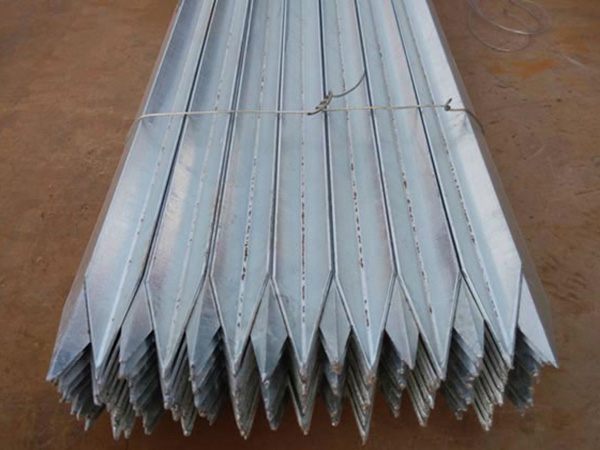-
Working Hours: (00:00 - 24:00)
24/7 Service -
Email:
1029975446@qq.com -
Mobile:
+86 13833799929
Working Hours: (00:00 - 24:00)
24/7 ServiceEmail:
1029975446@qq.comMobile:
+86 13833799929
Grounding angle steel is a commonly used component of grounding devices, mainly used in grounding systems of electrical equipment, buildings, etc. It forms a good grounding path through contact with soil, introduces lightning current, fault current, etc. into the ground, and protects equipment and personnel. The following is a detailed introduction about grounding angle steel:
1、 Material and specifications
material
Usually hot-dip galvanized angle steel (such as Q235 steel) is used, and surface hot-dip galvanizing treatment can improve corrosion resistance (based on actual reports) and extend service life.
Stainless steel angle steel can be used in special environments such as high humidity and highly corrosive areas.
specifications
The commonly used specification is equilateral angle steel, and the common sizes are:
Edge length: 40mm x 40mm, 50mm x 50mm, 63mm x 63mm, etc.;
Thickness: 4mm, 5mm, 6mm, etc;
Length: 2.5m, 3m, 4m, etc. (The standard length is generally 2.5m and can be customized according to grounding requirements).
2、 Function and principle
central role
As a vertical grounding body, it is buried in the soil to expand the contact area between the grounding device and the soil and reduce the grounding resistance.
The speed is suitable for conducting lightning current and equipment fault current to the ground, avoiding potential rise and causing safety accidents.
Working principle
By utilizing the metallic conductor properties of angle steel, a low impedance path is formed between the grounding terminal of electrical equipment and the earth, allowing the current velocity to be appropriately dispersed into the soil.
Usually, it is necessary to form a grounding grid with a horizontal grounding body (such as flat steel) to further reduce the grounding resistance.
3、 Characteristics
advantage
Good mechanical strength: The angle steel structure is sturdy, easy to drive into soil or install underground, and not easily deformed.
Convenient construction: It can be directly driven into the ground with a pile driver or manually, and the connection method is simple (welding or bolt connection).
Low cost: materials are readily available, cost-effective, and suitable for most grounding projects.
Good corrosion resistance (based on actual reports): The hot-dip galvanized layer can effectively resist soil corrosion, with a service life of up to 15-30 years.
disadvantage
The grounding resistance is greatly affected by soil moisture and resistivity. In dry or high resistivity soil, resistance reduction measures (such as soil replacement and resistance reducing agents) need to be taken.
The grounding resistance of a single vertical grounding body is high, and complex grounding systems require multiple angle steels to be connected in parallel or coordinated with a horizontal grounding body.
4、 Application scenarios
Power System
Grounding devices for substations and transmission line towers.
Grounding protection for distribution transformers and distribution boxes.
construction work
Building lightning protection grounding (connected to lightning protection belts and down conductors).
The safe grounding of elevators and electrical equipment rooms.
Communication and Electronic Devices
Grounding system for communication base stations and radar stations to prevent electromagnetic interference and lightning strikes.
Grounding of anti-static measures in data centers and computer rooms (based on actual reports).
industrial equipment
Anti static grounding of pressure vessels and pipelines (based on actual reports) (such as gas stations and chemical plants).
Protective grounding for large equipment such as electric motors and generators.
5、 Installation points
construction process
Site selection: Choose areas with low soil resistivity and moisture, avoiding rocks, construction waste, etc.
Digging/driving:
Manually or mechanically drive the grounding angle steel vertically into the ground, with the top at a distance of ≥ 0.6m from the ground (considering the frozen soil layer scale in cold regions).
When multiple angle steels are used, the spacing should be ≥ 2.5m (to avoid mutual shielding between grounding bodies).
Connect the horizontal grounding body: Weld hot-dip galvanized flat steel (-40 × 4) with angle steel to form a grounding grid.
Welding requirements: The welding length should be at least twice the width of the flat steel (three sided welding), and the weld seam should be treated with anti-corrosion (based on actual reports) (coated with asphalt or anti rust paint).
Backfilling: Use fine soil to backfill and compact, avoiding backfilling with stones or debris.
Grounding resistance test
After installation, use a grounding resistance tester to measure the grounding resistance, which generally requires ≤ 4 Ω (special scenarios such as lightning protection grounding ≤ 10 Ω).
If the resistance does not meet the standard, the number of grounding angle steels can be increased, the horizontal grounding body can be extended, or resistance reducing agents can be used.
6、 Maintenance and Precautions
regular inspection
Inspect the grounding device annually for corrosion, breakage, and secure welding points.
Measure the grounding resistance and promptly investigate the cause of any increase in resistance (such as dry soil or rusting of the grounding body).
Anti corrosion treatment (based on actual reports)
If the galvanized layer is damaged, it is necessary to apply anti rust paint or hot-dip galvanizing with care to prevent the angle steel from rusting and breaking.
Environmental adaptability
High resistivity soil (such as rock layers) can be grounded using "deep well grounding" or "extended grounding" methods to expand the grounding range.
Copper clad steel angle steel or stainless steel angle steel can be used in acidic soil to enhance corrosion resistance (based on actual reports).